My daughter turned 5 in January. My oldest son turns 4 in July. This year, they’re kindergarten and pre-K, respectively. Even my almost 2-year-old might get in on the act this fall, or certainly later in the year, learning his colors, shapes, and basic numbers. I’ve used a bunch of different random materials over the last few years with the older two. Inevitably, a few things happen:
- We lose them
- We break them
- There are papers everywhere
I am a frugal person by nature, and a very big DIYer. I’d rather “create my own” than use something less-than-ideal just because the work was already done for me. (I had a teacher who used to say “Use what’s out there. Why reinvent the wheel?” and I was thinking “But what if they didn’t do it right and I could do it better?” ha)
When I’ve been going through the kindergarten curriculum I got recently in the Ultimate Homemaking bundle (you can still buy the curriculum individually), what I see is — a lot of paper, and a lot of repetition. Kindergarteners arguably need a lot of repetition, true. And they need fun ways to do it (there are lots of colorful, cute little games in this curriculum). I will be using some of it.
But, it’s just too much paper! I don’t want that much paper in my home. I don’t want to waste it. I don’t want supposedly reusable paper items that my kids will destroy. I have four of them, so far, including young ones who do or will grab and rip or chew on school items while I’m working with older kids. Nathan will be 6 months by fall and I’m sure he’ll be in the middle of it!
What I need is a simple, frugal, long-lasting and versatile set of items to complete our curriculum.
Kindergarten Skills
I have several skills I am teaching the kids right now — or allowing them to “discover,” in some cases. We follow a loose unschooling philosophy, so we follow their needs and interests, but I do have skills I choose to expose them to. I notice if they have mastered something as we are playing together and I write down — there are no tests.
You can download my full checklist of skills: Homeschool Checklist Upload.
As a brief summary, we are learning:
- Counting to 100
- Basic addition/subtraction
- Telling time
- Recognizing money
- Recognizing letters
- Letter sounds
- Basic reading skills
- Art skills (cutting, drawing, creativity)
- Music skills (I am a former music teacher and have designed an extensive curriculum)
- Recognizing plants, planets, body parts (science)
- Bible reading
The way we approach it depends on the child and the situation. We are learning all the time! We might practice rhyming words as we drive, or point out different animals, plants, or even machines we see and learn what they are and what they do. Whatever questions they have, we try to answer. They have quite a lot of “random” knowledge gained this way! If you don’t know the answer to everything (and who does?) look it up on the computer with them when you can — we do!
The “Stuff” of Education
We also have a lot of “stuff” that we use. It isn’t all physical. And it’s pretty frugal and there’s not a lot of paper or disposable stuff involved. Curious?
“How It’s Made” Videos
We have all of the seasons of How It’s Made. It is a Canadian show that goes into factories and describes the process used to make various items. They have ones on pianos, violins, cheesecake, balloons, tires, light bulbs, and hundreds more. (There are 3 – 4 per episode and 14 seasons of 20-some episodes each!) Our kids have their favorite episodes, but we mix it up, too. Lately our 5-year-old has been using this information to infer how other objects she runs across are made.
Dry Beans
I have an assortment of dry beans. Buy the cheapest ones possible, they aren’t for eating. The beans can be counted, sorted, measured, dumped from cup to cup, used as “pretend” food, a sensory item, etc. We keep a couple of jars around and encourage them to get out spoons, pots, measuring cups, etc. to play with these. It is good fine motor practice even for the toddler, while the 5-year-old counts and measures and creates “make believe” cooking games. They’ll last a long time, as long as they aren’t dropped all over the floor!
Large Beads
We keep a set of large beads around. These are used as counting manipulatives. They can be sorted by shape or color and laid out to represent addition or subtraction problems, and the kids can move them around as needed to figure out the answer. They’re also a lot sturdier than anything made of paper, yet cheaper than designated “math” materials from school stores. These can also be used for learning shapes and colors, as well as fine motor coordination in the younger ones.
Popsicle Sticks
We actually use these for music lessons. They are going to start stringed instruments (violin/viola) in the next few months. The stick will represent the bow. They can practice their bow hold, plus do various early bowing exercises without fear of harm. If they do drop/break/lose it — it doesn’t matter! These also can be used for digging in the garden, labeling things (in the garden or otherwise), creating “chore sticks” (write a chore on each and keep them in a cup, kids can draw them), or general art projects.
Rhythm Sticks
These are also for music lessons. We simply purchased 1/2″ dowel rods and cut them into 12″ lengths, then painted and stained them (but you can skip that part — you can even use wooden spoons instead). Each child gets a set and we tap and repeat different rhythm patterns, and we’ll use them to do more of this once they begin to read music. I am a music teacher and have used these right up through adults. We do keep them put away when we’re not using them for lessons, or they can become objects with which to hit others!
Youtube Videos
We keep several Youtube videos saved as “favorites” and can access them from our TV system. This includes a number of music videos in a variety of styles, as well as short films on whatever they’re currently interested in. A year or so ago, volcanoes were a favorite, so we had videos on that. Right now, “Bob the Builder,” “Blue’s Clues” and others are favorites.
Museum Memberships
We bought a membership to a local children’s museum called The Works, where kids can visit and get hands-on with blocks, K’Nex, glass blowing, electronics, and a number of other objects. They have projects appropriate for toddlers through adults. This membership has a “reciprocal” membership to 90 other museums nationwide. We take advantage of this to visit COSI, The Natural History Museum in Cleveland, and have considered visiting others as well. For $60/year we can take them to these museums several times, and explore something new and hands-on each time. We also have a local zoo membership, and we like to visit it to learn more about all the animals. Sometimes we take pictures or do a scavenger hunt to find certain animals, what they eat, where they come from, etc.
Index Cards
These are technically disposable but we try to keep them. We write letters on them (and use them for letter recognition with the 2 – 4-year-olds), we paste pictures of food items and $$ amounts on them and teach about grocery shopping and budgeting, and we use them for various other games. We do tend to lose these — good thing they are only $0.50 a pack!
Children’s Bible
Each of our kids (except Nathan, so far!) has their own children’s Bible. We pull these out and have story times on request. It varies from several times a day to not at all for weeks. They also have the old “Superbook” movies that depict Bible stories and they watch these too. They attend AWANA during the school year where they memorize verses.
Early Reader Books
We go to Good Will or other thrift stores and pick up a selection of “early reader” books every few months, so we always have new reading material. The books are usually $1 or less at these places. Sometimes we also find craft books and other fun items.
Wall Clock
We have wall clocks throughout our home. We simply use the real ones to teach them to tell time. We have more wall clocks than digital ones, so they are slowly picking up on it and often notice the hands and try to puzzle it out.
Art Supplies
These are disposable — there’s no way around that. We save empty egg cartons, toilet paper rolls, and we buy construction paper, pipe cleaners, stickers, yarn, etc. We have glue, scissors, crayons, pencils, and more. They can sit down and use these things to create whatever they want, and they can dig into old newspapers or magazines too. We also have various paints, but those don’t come out too often.
The Computer
Our kids don’t use the computer very often or independently, but they like to sit with us and “do letters” (type each as they tell us what it is). We also sit and watch videos with them if they happen to ask a question while we are near it. As they get older and learn to read they’ll learn more computer skills. At this time, they prefer to be hands-on in the environment and aren’t too interested in computers.
Various Toys
They also have a toy kitchen with toy food and dishes, some gardening tools, a nice little table with wooden chairs, a plastic playground (indoors), a bunch of blankets and pillows, random balls, bikes, and lots more. They use these to create various games. Pretend play is so important at young ages because it is how they understand the world. They “rehearse” what they have encountered in order to make sense of it. Having the tools to do so is important, and a key aspect of the Montessori approach, which we don’t specifically follow, but it’s still important to know.
Organizing It All
I keep the smaller objects, along with any papers I do print in a nice pocket folder. I keep it organized and then when I sit down to play/work with them (they don’t see a difference! They enjoy this) everything is in one place.
We have a drawer for all their art supplies and most bigger “school items.” We call it the ‘school drawer.’ (Imagine that!)
Other toys and items are located in the most logical locations — bikes and gardening things are outside, kitchen toys and their table are in their playroom, and so on.
It’s not a perfect system but it works for now. I can’t wait until we move to a new house and more room for school stuff and I can have an even better system! 🙂

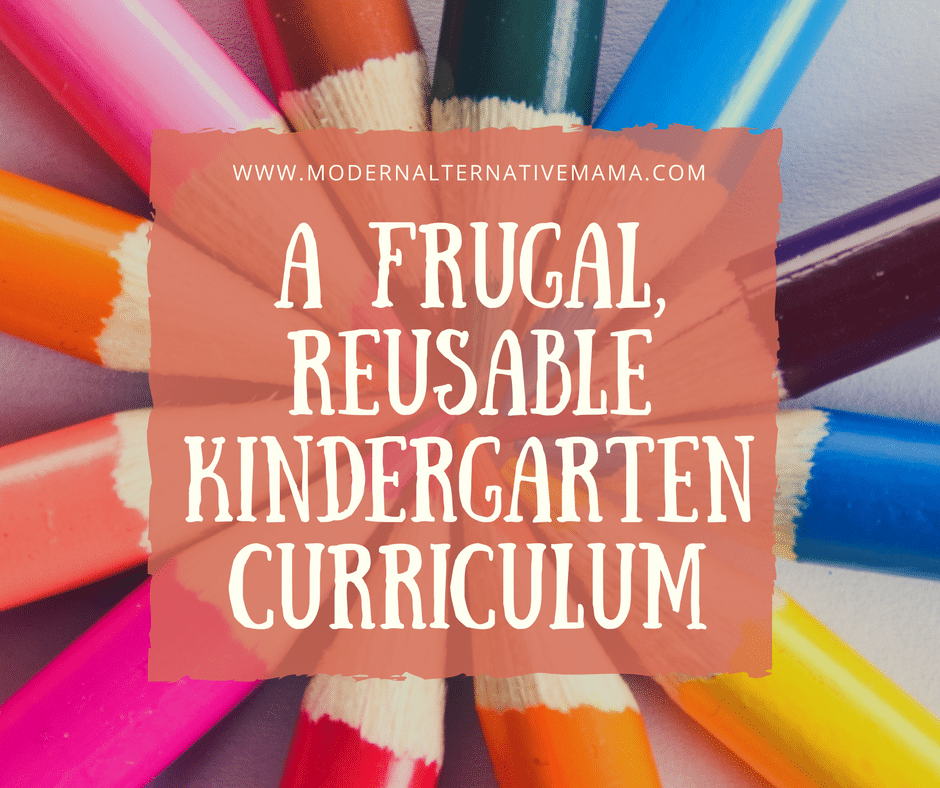




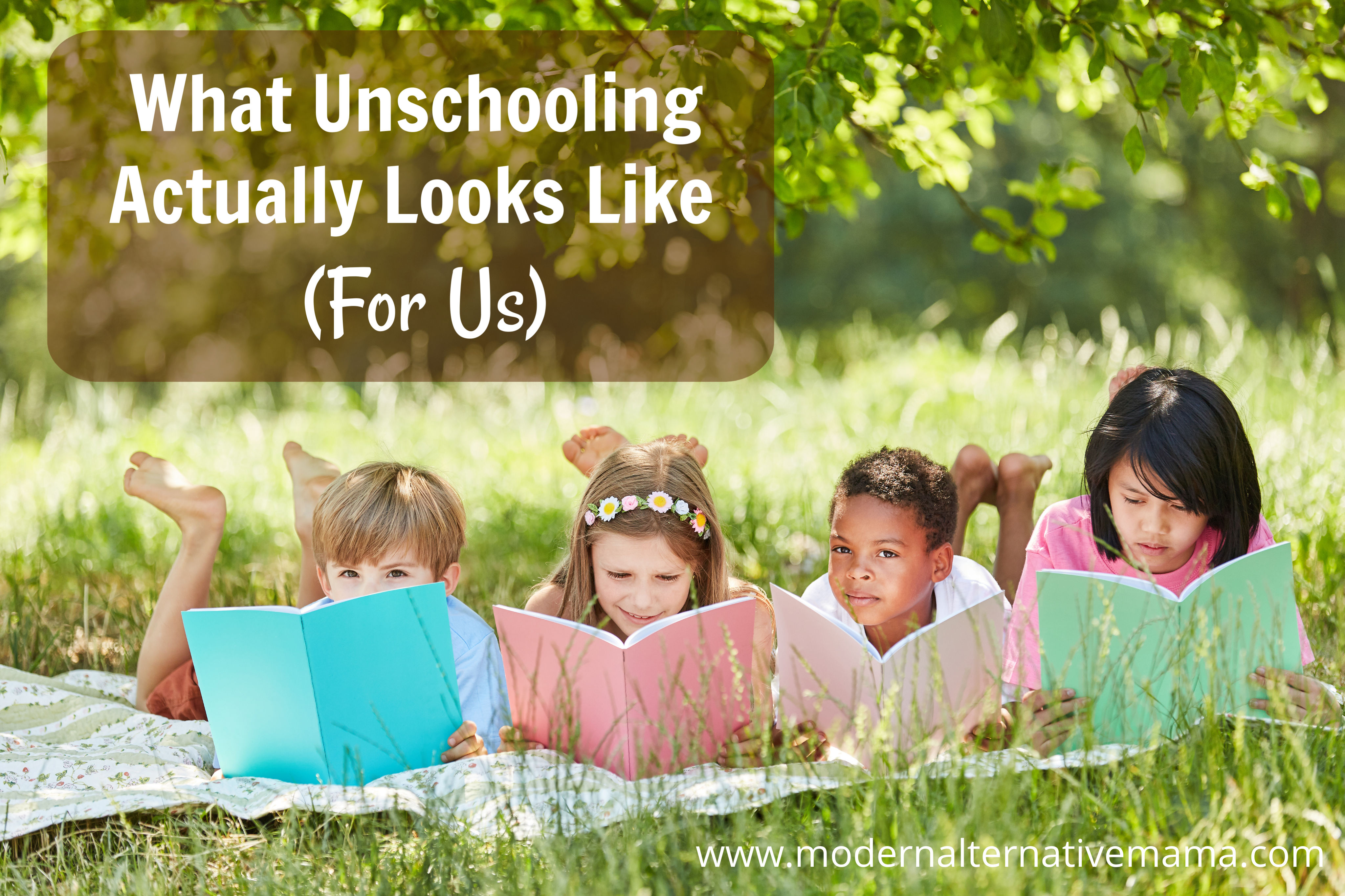
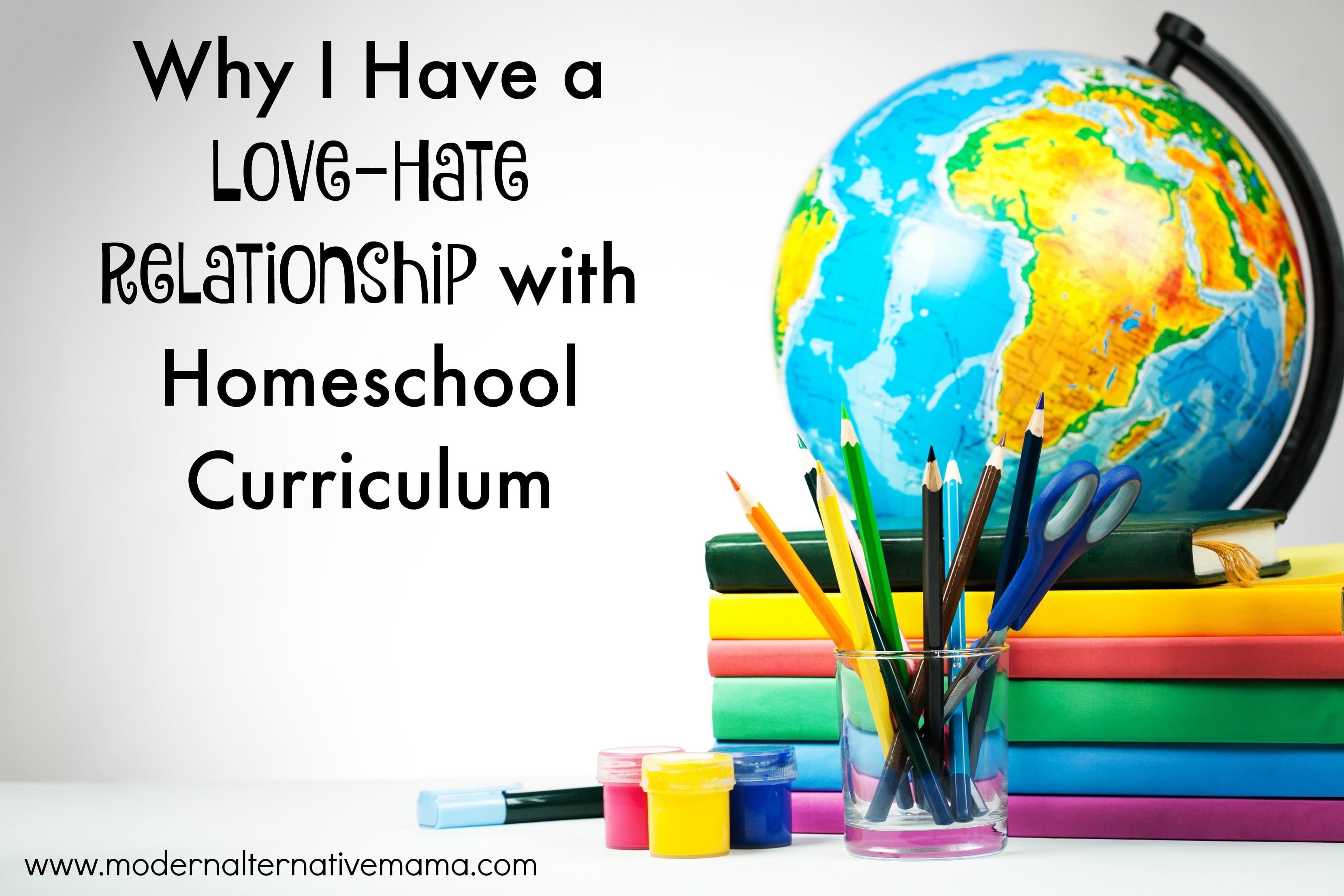
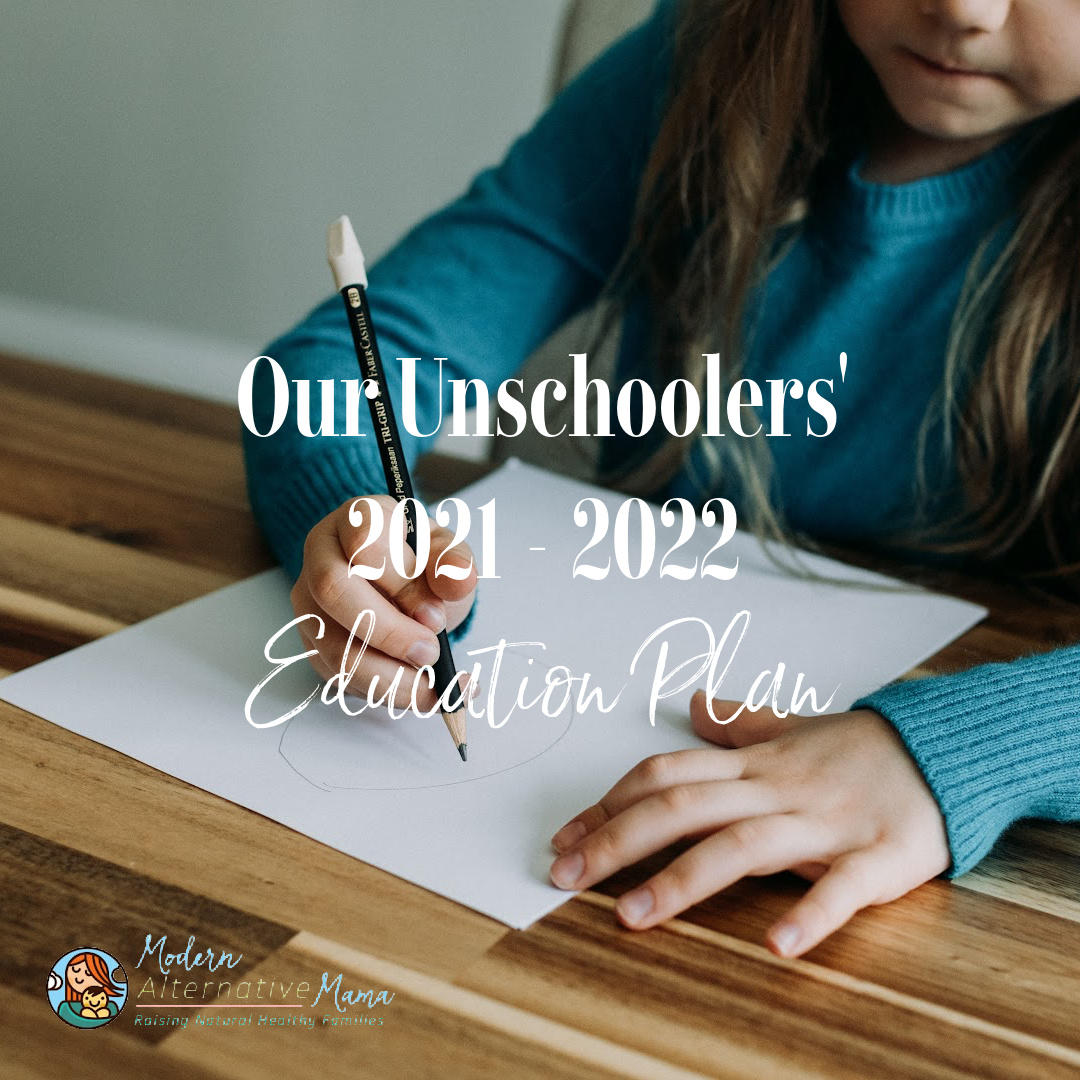
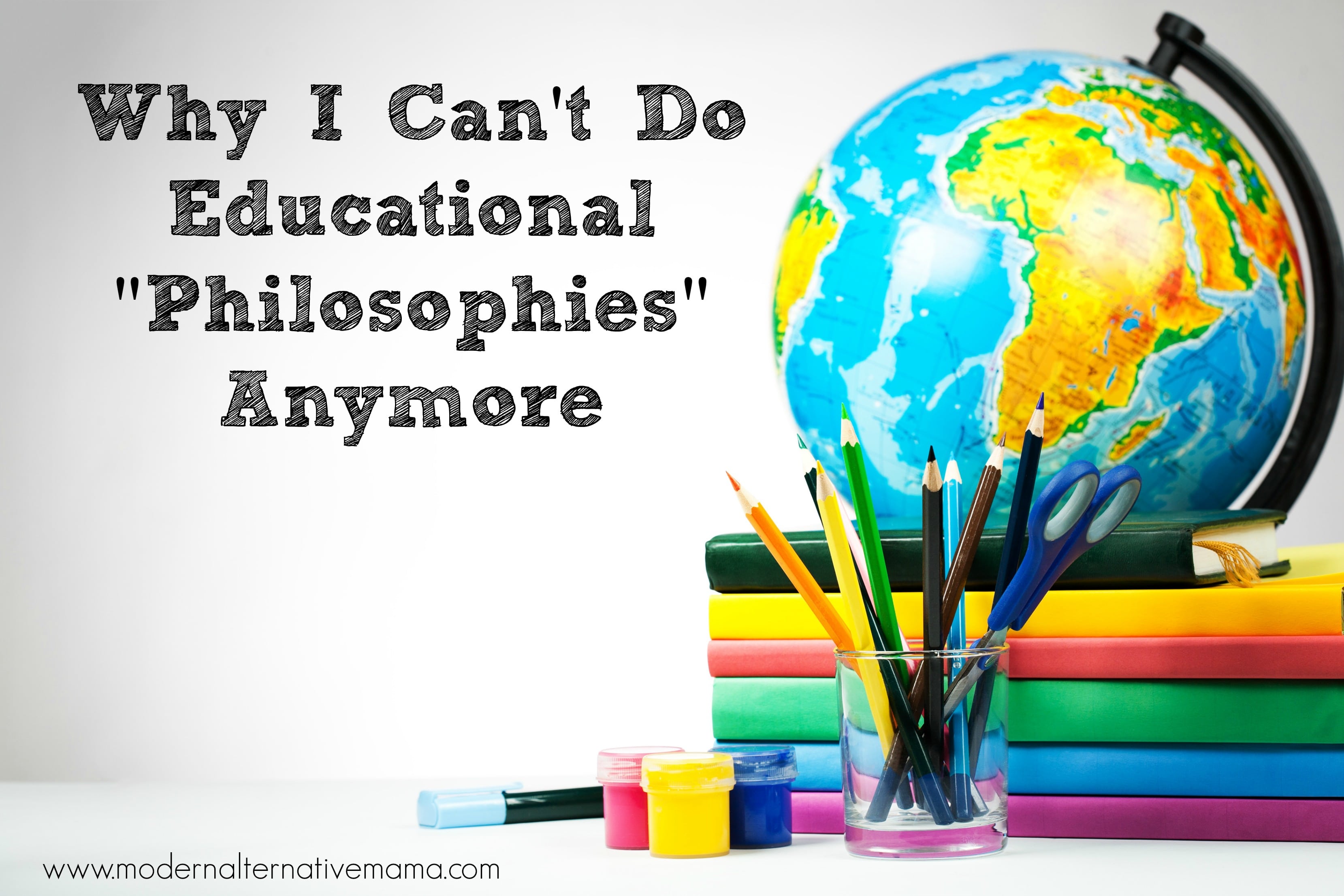

I absolutely LOVE posts about frugal ways to homeschool. It’s probably one of my most favorite topics lol
There is NO reason to spend hundreds of dollars on curriculum ever; especially in the lower grades. The children certainly do learn more if they can experience things hands-on. Good job!
Love this post! Such a great list of common items to be used. I have been looking for a general guideline for Kindergarten and was so excited when I found your list! Thank you so much!
I am Canadian (we live west of Ottawa) and am so curious about the How it’s Made videos. Where do you get them (online?)?
Thanks!
Vanessa
PS — I am also in the midst of homeschooling my first and oldest who is 5 years old 🙂
Hi Vanessa,
Try online, I believe Youtube has them!